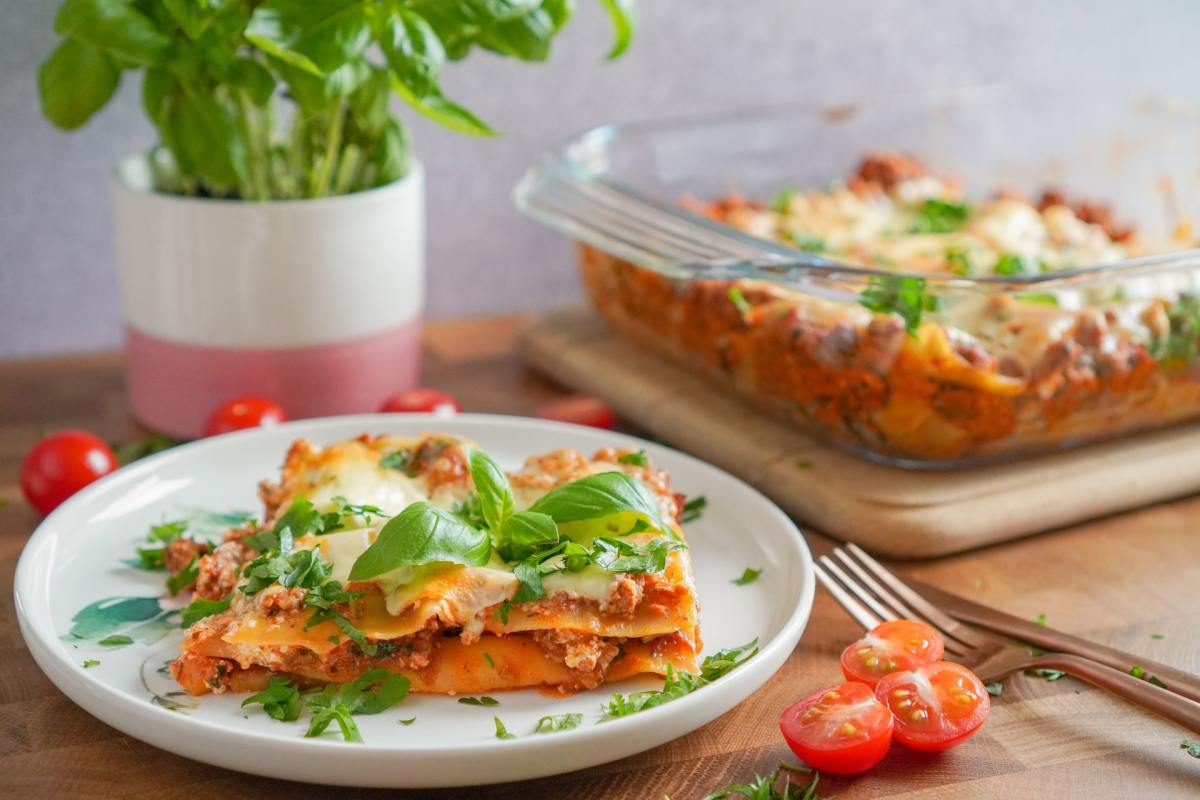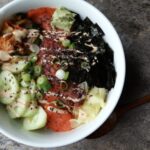Craving creamy mashed potatoes without the carb overload? Yearning for cheesy mac and cheese that won’t derail your diet? This guide unveils the secrets to transforming your beloved comfort foods into guilt-free, low-carb delights. Imagine sinking your teeth into fluffy cauliflower mash, savoring the rich, cheesy goodness of a low-carb mac and cheese, or enjoying a hearty shepherd’s pie that’s surprisingly light. We’ll explore innovative techniques and delicious recipes that allow you to indulge in your favorite flavors without sacrificing your health goals. Prepare to rediscover the joy of comfort food, reinvented.
We’ll journey through a world of low-carb pasta alternatives, from vibrant zucchini noodles to delicate shirataki strands and versatile cauliflower rice. We’ll also explore the art of creating light and airy low-carb breads, from cloud bread’s ethereal texture to the nutty heartiness of almond flour loaves. Then, we’ll dive into classic comfort food makeovers, transforming beloved dishes like mashed potatoes, mac and cheese, and shepherd’s pie into low-carb masterpieces. Finally, we’ll explore the sweet side of low-carb living with decadent yet diet-friendly desserts, proving that indulgence doesn’t have to be a carb-heavy affair.
Low-Carb Pasta Alternatives

Embark on a culinary journey to discover delicious and healthy alternatives to traditional pasta, perfect for those following a low-carb lifestyle. These substitutes offer a satisfying texture and flavor profile, allowing you to enjoy your favorite pasta dishes without the carb overload. We will explore three popular options: zucchini noodles, shirataki noodles, and cauliflower rice, providing you with recipes and nutritional information to make informed choices.
Zucchini Noodle Preparation
Imagine vibrant green zucchini ribbons, delicately spiraled into noodles. To create zucchini noodles, also known as zoodles, wash and trim two medium-sized zucchini. Using a vegetable peeler or spiralizer, create long, thin noodles. Sauté the zoodles in a pan with a touch of olive oil for 2-3 minutes until slightly tender-crisp. Avoid overcooking, as this will result in mushy noodles. This quick preparation method preserves the zucchini’s bright green color and fresh flavor.
Shirataki Noodle Preparation
Shirataki noodles, derived from the konjac yam, boast an almost translucent, jelly-like appearance. These noodles require minimal cooking. Rinse them thoroughly under cold water to remove any residual odor. Gently sauté them in a pan for a minute or two, or simply add them to your sauce and heat through. Their neutral flavor makes them incredibly versatile, absorbing the flavors of any sauce you choose. Preparation time is incredibly short, usually under 5 minutes.
Cauliflower Rice Preparation
Picture fluffy, snow-white cauliflower transformed into a rice-like consistency. To make cauliflower rice, finely pulse one head of cauliflower in a food processor until it resembles rice grains. Sauté the cauliflower rice in a pan with butter or olive oil for 5-7 minutes, until it softens and slightly browns. This process enhances the cauliflower’s natural sweetness and adds a delightful nutty aroma.
Nutritional Comparison of Low-Carb Pasta Alternatives
The following table provides a comparison of the nutritional content per 100g serving. Note that nutritional values can vary depending on the specific brand and preparation method.
| Name | Calories | Net Carbs (g) | Protein (g) |
|---|---|---|---|
| Zucchini Noodles | 17 | 3 | 1 |
| Shirataki Noodles | 9 | <1 | 0 |
| Cauliflower Rice | 25 | 5 | 2 |
Texture and Taste Comparison Infographic
Imagine a visual representation comparing the textures and tastes. Traditional pasta is depicted with a rich golden-yellow hue, a smooth, firm consistency, and a slightly chewy mouthfeel. Zucchini noodles showcase a vibrant green color, a tender-crisp texture, and a mild, subtly sweet taste. Shirataki noodles are almost transparent, with a soft, jelly-like consistency and a neutral flavor. Cauliflower rice presents a pristine white color, a fluffy, slightly grainy texture, and a mild, subtly sweet flavor reminiscent of cauliflower.
Sauce and Topping Suggestions
Zucchini noodles pair beautifully with light and fresh sauces like pesto, lemon-garlic butter, or a creamy tomato sauce. Shirataki noodles excel in flavorful Asian-inspired dishes, complementing stir-fries, curries, and peanut sauces. Cauliflower rice acts as a fantastic base for creamy mushroom sauces, cheese sauces, or even a simple garlic butter. For added flavor and nutrition, consider topping your low-carb pasta with grilled chicken, shrimp, vegetables, or herbs. A simple recipe suggestion for zucchini noodles would be to toss them with pesto, cherry tomatoes, and crumbled feta cheese. For shirataki noodles, try a spicy peanut sauce with shredded carrots and bell peppers. Cauliflower rice is delicious topped with a creamy mushroom sauce and sauteed spinach.
Reimagining Classic Breads
The comforting aroma and satisfying chew of freshly baked bread are hard to resist, but for those following a low-carb lifestyle, traditional loaves are often off-limits. Fortunately, clever culinary innovation has produced delicious and surprisingly versatile low-carb alternatives that capture the essence of classic bread without the high carbohydrate count. This section explores three popular options: cloud bread, almond flour bread, and coconut flour bread, detailing their preparation, texture, flavor, and offering tips for achieving optimal results.
Cloud Bread Recipe
Cloud bread, also known as oopsie bread, boasts an incredibly light and airy texture. Its ethereal quality stems from the whipping of egg whites, creating a fluffy cloud-like consistency. The recipe relies heavily on eggs and cream of tartar, which helps stabilize the egg whites for maximum volume. The resulting bread is delicate, almost melt-in-your-mouth, and perfect for sandwiches or as a side.
- Preheat your oven to 300°F (150°C). Line a baking sheet with parchment paper.
- In a large bowl, beat 3 large egg whites with 1/4 teaspoon of cream of tartar until stiff peaks form. The egg whites should be glossy and hold their shape.
- In a separate bowl, whisk together 3 large egg yolks with 3 tablespoons of cream cheese, softened. The mixture should be smooth and creamy.
- Gently fold the egg yolk mixture into the whipped egg whites, being careful not to deflate the egg whites. Use a spatula and fold in a circular motion from the bottom up.
- Drop rounded tablespoons of the batter onto the prepared baking sheet, leaving space between each cloud.
- Bake for 25-30 minutes, or until the clouds are lightly golden brown and firm to the touch.
- Let the cloud bread cool slightly on the baking sheet before serving.
- Ingredient Substitutions: While cream cheese is traditional, you can experiment with other soft cheeses like ricotta or mascarpone for subtle flavor variations. A pinch of salt can enhance the overall taste.
Almond Flour Bread Recipe
Almond flour bread offers a denser, more substantial texture compared to cloud bread. The nutty flavor of almond flour lends a unique and satisfying taste, making it a hearty and flavorful alternative to wheat bread. This recipe uses baking powder as a leavening agent, resulting in a slightly more cake-like consistency.
- Preheat your oven to 350°F (175°C). Grease and flour a loaf pan.
- In a large bowl, whisk together 2 cups almond flour, 1 teaspoon baking powder, 1/2 teaspoon salt, and 1/4 cup sweetener (e.g., erythritol or stevia). The dry ingredients should be evenly combined.
- In a separate bowl, whisk together 4 large eggs, 1/4 cup melted butter, and 1/4 cup milk (almond or coconut milk work well). The wet ingredients should be well blended.
- Gently pour the wet ingredients into the dry ingredients and stir until just combined. Do not overmix, as this can lead to a tough bread.
- Pour the batter into the prepared loaf pan and bake for 30-35 minutes, or until a toothpick inserted into the center comes out clean.
- Let the bread cool in the pan for 10 minutes before transferring it to a wire rack to cool completely.
- Ingredient Substitutions: Experiment with different nuts and seeds to add texture and flavor. Chia seeds or flax meal can be added for extra fiber and nutrients. You can also substitute the butter with olive oil for a healthier fat source.
Coconut Flour Bread Recipe
Coconut flour bread provides a uniquely moist and slightly sweet bread with a distinct coconut flavor. Because coconut flour is highly absorbent, this recipe requires careful attention to moisture levels. The result is a dense, crumbly bread that is best enjoyed toasted or as part of a savory dish.
- Preheat your oven to 350°F (175°C). Grease and flour a loaf pan.
- In a large bowl, whisk together 1 cup coconut flour, 1 teaspoon baking powder, 1/2 teaspoon salt, and 1/4 cup sweetener (e.g., erythritol or stevia).
- In a separate bowl, whisk together 4 large eggs, 1/2 cup unsweetened applesauce, 1/4 cup melted coconut oil, and 1/2 cup milk (almond or coconut milk).
- Gradually add the wet ingredients to the dry ingredients, mixing until just combined. Coconut flour absorbs liquid quickly, so add the wet ingredients slowly to avoid a dry bread.
- Pour the batter into the prepared loaf pan and bake for 35-40 minutes, or until a toothpick inserted into the center comes out clean.
- Let the bread cool in the pan for 10 minutes before transferring it to a wire rack to cool completely.
- Ingredient Substitutions: You can add shredded coconut for extra flavor and texture. Different types of milk, such as almond or oat milk, can be used, influencing the final taste and moisture content.
Texture and Flavor Comparison
Compared to traditional wheat bread, these low-carb alternatives offer distinct textural and flavor profiles. Cloud bread is exceptionally light and airy, almost like a fluffy meringue. Almond flour bread provides a denser, slightly crumbly texture with a pronounced nutty flavor. Coconut flour bread is the densest, with a moist crumb and a distinct coconut taste. Wheat bread, in contrast, offers a wide range of textures depending on the type, but generally possesses a more uniform and chewy texture with a less pronounced flavor.
Tips for Optimal Texture and Moisture
Preventing dryness is crucial in low-carb baking. For all three breads, using fresh, high-quality ingredients is key. Don’t overmix the batter, as this can develop gluten (in almond flour bread) and lead to a tough texture. Adding a little extra moisture (milk or applesauce) can help prevent dryness, especially in coconut flour bread. For a softer crumb, let the bread cool completely before slicing.
Embarking on a low-carb journey doesn’t mean sacrificing the comforting flavors you love. By mastering the art of ingredient substitution and embracing creative culinary techniques, you can enjoy healthier versions of your favorite dishes. This guide has equipped you with the knowledge and recipes to transform classic comfort foods into low-carb wonders. From the satisfying chew of zucchini noodles to the airy lightness of cloud bread, and the rich indulgence of low-carb desserts, you’ll discover a world of culinary possibilities. So, embrace this exciting adventure, experiment with new flavors, and savor the delicious rewards of a healthier, more satisfying lifestyle.
Key Questions Answered
Can I use any sweetener for low-carb desserts?
While many sweeteners work, some are better suited than others for different recipes. Erythritol and monk fruit are popular choices for their minimal impact on blood sugar. Always check the nutritional information and consider the taste profile of your chosen sweetener.
How do I prevent low-carb breads from becoming dry?
Proper hydration is key. Use the correct ratio of liquids to dry ingredients. Adding an egg or applesauce can also help bind moisture. Don’t overbake!
Are low-carb pasta alternatives as nutritious as traditional pasta?
Nutritional profiles vary greatly. Some offer similar protein content but fewer carbs. Always check the nutrition label and compare it to your usual pasta choice.
What are some good substitutes for high-carb vegetables?
Cauliflower, zucchini, mushrooms, and spinach are excellent alternatives in many dishes. They offer a variety of textures and flavors.


